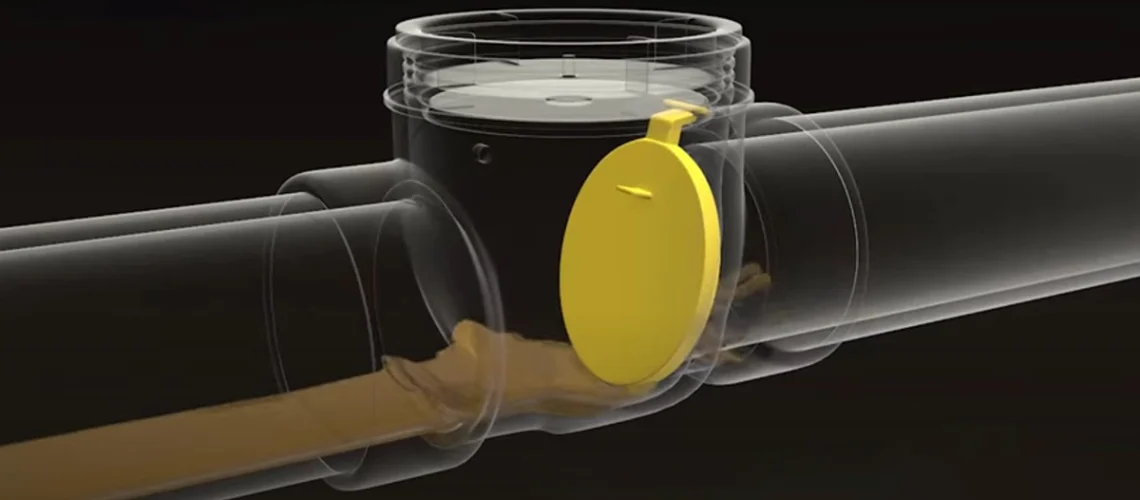In the world of plumbing and drainage systems, a backwater valve plays a crucial role in preventing unwanted flooding and sewage backups. This device might sound technical, but its purpose is quite straightforward: to ensure that wastewater flows in the right direction and doesn’t cause havoc in your home. In this article, we’ll delve into the details of what a backwater valve is, how it functions, the various types available, the benefits of installing one, and the significance of regular maintenance.
Contents
What Is a Backwater Valve and How Does It Work?
In the world of plumbing and home protection, understanding what is a backwater valve is essential—especially for homeowners living in areas prone to flooding or heavy rainfall. Also known as a sewer backwater valve, this crucial device helps prevent the nightmare of sewage backing up into your home.
In this article, we’ll explore what is a sewer backwater valve, how it works, the types available, and why installing one is a smart long-term investment.
Protect Your Home from Sewer Backups
Wondering what is a sewer backwater valve and if you need one?
Our licensed plumbers can inspect your system and recommend the right solution to keep your basement dry and safe.
🚿 Contact POM Plumbing today to schedule your backwater valve consultation!
What Is a Sewer Backwater Valve?
So, what is a sewer backwater valve exactly?
It’s a mechanical device installed in your drainage system to stop wastewater from flowing back into your home when municipal sewers become overloaded. This often happens during heavy storms or rapid snowmelt. The backwater valve ensures wastewater can exit your property freely—but prevents anything from coming back in.
How Does a Backwater Valve Work?
The concept behind a backwater valve is simple: it allows wastewater to flow out of your home, but not back in.
- Under normal conditions, the valve flap stays open to let water drain properly.
- When backflow pressure occurs, such as during a sewer backup, the flap closes to block contaminated water from entering your basement or lower floors.
Key Components:
- Flap or Gate: The movable barrier that opens and shuts based on water pressure.
- Housing Unit: Sealed structure that supports and guides the flap mechanism.
Spring Assist (optional): Speeds up closure during emergencies for added protection.

Types of Backwater Valves
There are several types of backwater valves designed for residential and commercial use:
- Check Valve: Uses a hinged flapper to block reverse flow—simple and widely used.
- Gate Valve: Uses a vertical gate to block sewer backup more precisely.
- Combination Valve: Merges both mechanisms for enhanced protection.
Why Should You Install a Backwater Valve?
Installing a backwater valve isn’t just a precaution—it’s a smart investment in your property’s safety:
- ✅ Flood and Backup Prevention: Stops sewage from entering your home during storms.
- ✅ Health Protection: Keeps bacteria and waste from contaminating your living space.
- ✅ Property Value and Savings: Reduces potential cleanup and repair costs after floods.
Install a Backwater Valve Before It’s Too Late
Don’t wait for the next storm to learn the hard way.
Now that you know what is a backwater valve, take action and protect your home from flooding and costly sewage backups.
📞 Call us now or book online — get expert installation with POM Plumbing!
Backwater Valve Maintenance Tips
Knowing what is a sewer backwater valve also means understanding the need for regular care:
- Perform visual checks for damage or buildup.
- Clean the flap and housing as part of seasonal maintenance.
- Test the system occasionally by simulating flow in floor drains.

Final Thoughts
So, what is a backwater valve used for?
It’s your home’s frontline defense against sewer backups and basement flooding. This humble but powerful device gives you peace of mind by ensuring that dirty water only flows out—not in. If you live in a flood-prone zone or have a finished basement, a sewer backwater valve is more than helpful—it’s essential.
FAQ about the check valve and how it works?
Installing a backwater valve can potentially enhance your property’s value by showcasing a proactive measure against water damage and flooding.
Installing a backwater valve can potentially enhance your property’s value by showcasing a proactive measure against water damage and flooding.
Yes, retrofitting a backwater valve into an existing plumbing system is possible with the guidance of a professional plumber.
While backwater valves are effective, they might require occasional maintenance and testing, and improper installation could hinder their performance.
A backwater valve prevents sewage or wastewater from flowing back into your home during heavy rainfall or flooding. It ensures that water flows in one direction only, away from your property.



